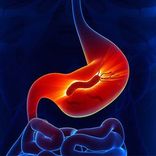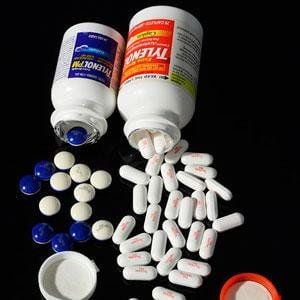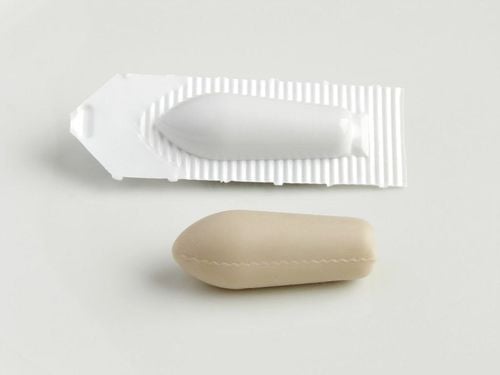Neck and shoulder pain is a common disease in society. In young people, neck and shoulder pain can be caused by accidents or injuries. However, as we age, a natural wear and tear occurs in the shoulder joint. Over time, this condition can lead to persistent pain. So, when my neck and shoulder pain, should I use muscle relaxants?
1. Causes of neck and shoulder pain
There are a lot of factors that can cause neck and shoulder pain and not all are related to shoulder joint problems or its surrounding structures.
1.1 Osteoarthritis
Cartilage is a smooth and cushioning tissue, that covers the ends of bones where they meet in a joint. Healthy cartilage helps smooth joint movement. Over time, cartilage can wear down or be damaged by trauma or accident, leading to the development of osteoarthritis.
1.2 Adhesive capsulitis
The shoulder’s synovial membrane can become inflamed, a condition called adhesive capsulitis (or frozen shoulder). This can occur due to other causes (such as rheumatoid arthritis) or from trauma of unknown cause.
Frozen shoulder develops when the shoulder capsule thickens, and becomes inflamed and tight. This also is caused by a reduction in synovial fluid which helps lubricate the joints. The result is restricted shoulder joint movement.
1.3 Bursitis
Pain due to bursitis also often happens in the shoulder. Air sacs are small fluid-filled sacs that reduce friction between 2 structures like bone, muscle, and tendon. In the shoulder, the bursa between the rotator cuff tendons and the acromion (part of the shoulder blade) can become inflamed and repetitive movements are the most common cause.
1.4. Injuries and sprains
Ligaments are soft tissues connecting bones, they contribute to shoulder stability by keeping the bone at the right place. Ligament injuries or sprains can cause short-term pain. This status is caused by partial (subluxation) or complete displacement (dislocation) of the humeral head from the glenoid fossa.
Soft tissue that helps hold the shoulder joint in place (labrum) can be torn. This is called a “labral tear”, which can happen due to trauma (for example: falling on your outstretched arm) or repetitive actions (for example: playing sports relating to throwing).
1.5. Neck and upper back
Problems with the joints and associated nerves of the neck and upper back can also cause referred shoulder pain. Pain episodes from these areas are often felt in the back of the shoulder and radiate to the outer arm.
1.6. Axillary nerve damage
This nerve can be injured by shoulder dislocations or fractures of the scapula, causing weakness in moving the arm away from the body.
2. Should muscle relaxants be used for neck and shoulder pain?
Muscle relaxants are often used to relieve pain, stiffness, or uncontrolled movements caused by muscle spasms. They act on the central nervous system, providing sedation for the patient and blocking nerve signals that transmit pain to the brain, thereby relieving pain and relaxing the neck and shoulder muscles. They are indicated when pain, limited movement, and stiffness are present in the neck and shoulders. Muscle relaxants should only be used for two weeks and three weeks maximum.
The following are common muscle relaxants. Remember that these typically treat acute muscle spasms. If you have a diagnosed with neuromuscular disorder causing spasticity, consult a physician for appropriate medication:
- Carisoprodol is a centrally acting muscle relaxant. It is indicated for adults and adolescents aged 16 and older.
Carisoprodol is a form of tablet with a dosage from 250 to 350mg. It is typically administered three times daily and before bed. This medication can make a dependent habit (quite the same as drug addiction), so you should only be used for two to three weeks. - Chlorzoxazone is a useful muscle relaxant for treating acute muscle spasms, including those in the back. This medication is available in tablet form with a common adult dosage of 500 mg three or four times daily. One of the side effects of chlorzoxazone is reddish (red urine) or purple urine. This occurs due to the body's metabolism of the drug and is not a cause for concern.
- Cyclobenzaprine is other muscle relaxant. It has the form of a tablet, suspension, or extended-release capsule. Should be avoided in individuals with certain heart conditions such as heart failure, recent heart attack, or arrhythmias.
- Metaxalone is a centrally acting muscle relaxant. It is usually used in the form of a tablet, 800mg three to four times a day. Although it can cause some side effects such as drowsiness, discomfort, stomachache, or intestinal pain, metaxalone has a long list of potential side effects that are less common.
Methocarbamol, similar to the medications mentioned above, is a centrally acting skeletal muscle relaxant. - Orphenadrine acts as both a muscle relaxant and an anticholinergic (blocking the neurotransmitter acetylcholine). Because of the anticholinergic feature, orphenadrine is often used to control tremors in Parkinson's disease. The total common dosage is 200 to 250mg, twice to three times a day.
In addition, patients with neck and shoulder pain may be prescribed other muscle relaxants if their muscle spasms due to nerve problems like spinal cord injury:
- Baclofen is used for chronic neurological conditions causing spasticity, such as multiple sclerosis or spinal cord injury.
- Tizanidine is often used to treat muscle spasms in multiple sclerosis.
Note: Muscle relaxants for acute back or neck pain are typically prescribed for short-term pain relief to avoid dependence. Therefore, most physicians will prescribe them for less than two weeks.
To arrange an appointment, please call HOTLINE or make your reservation directly HERE. You may also download the MyVinmec app to schedule appointments faster and manage your reservations more conveniently.













